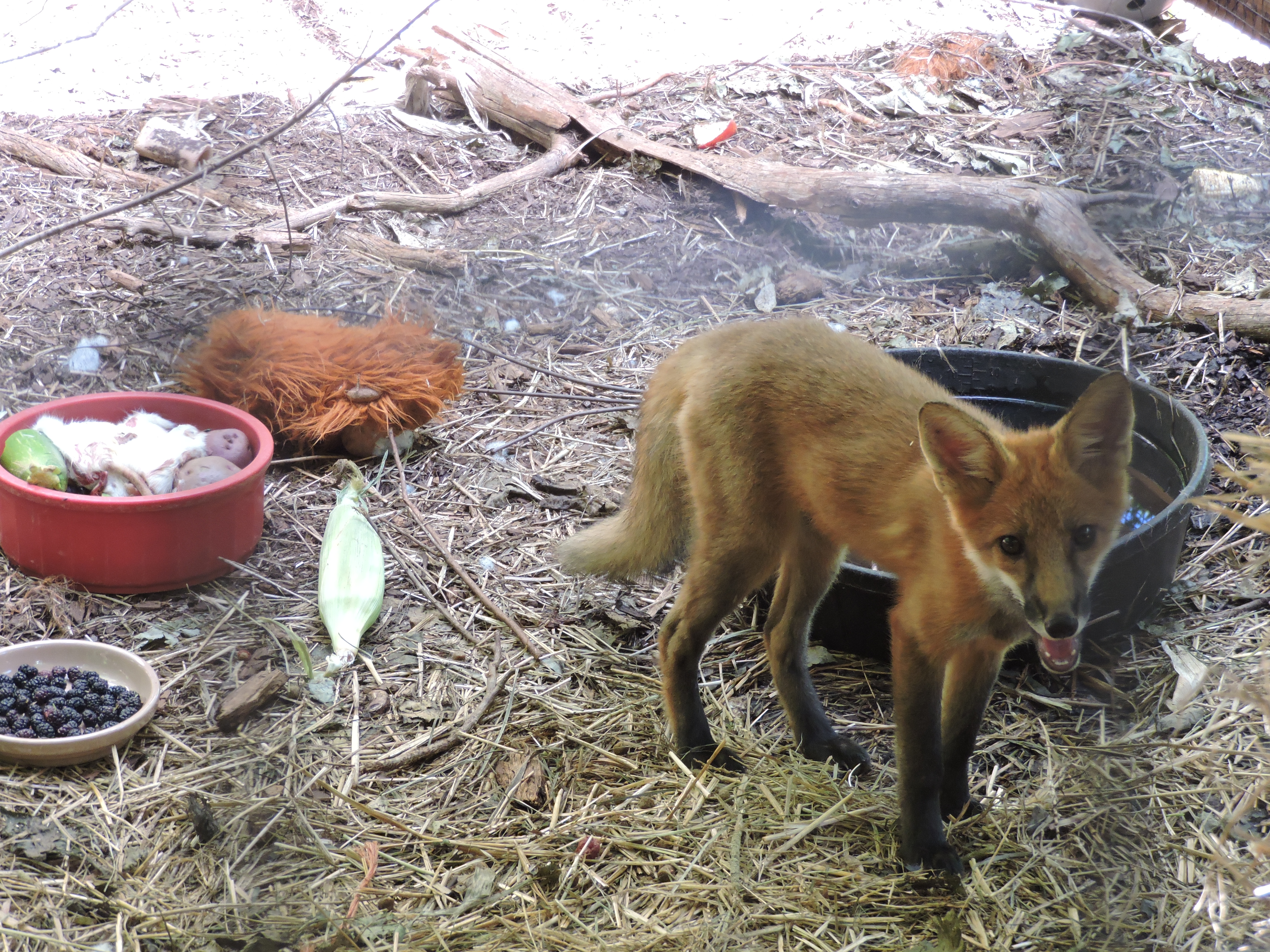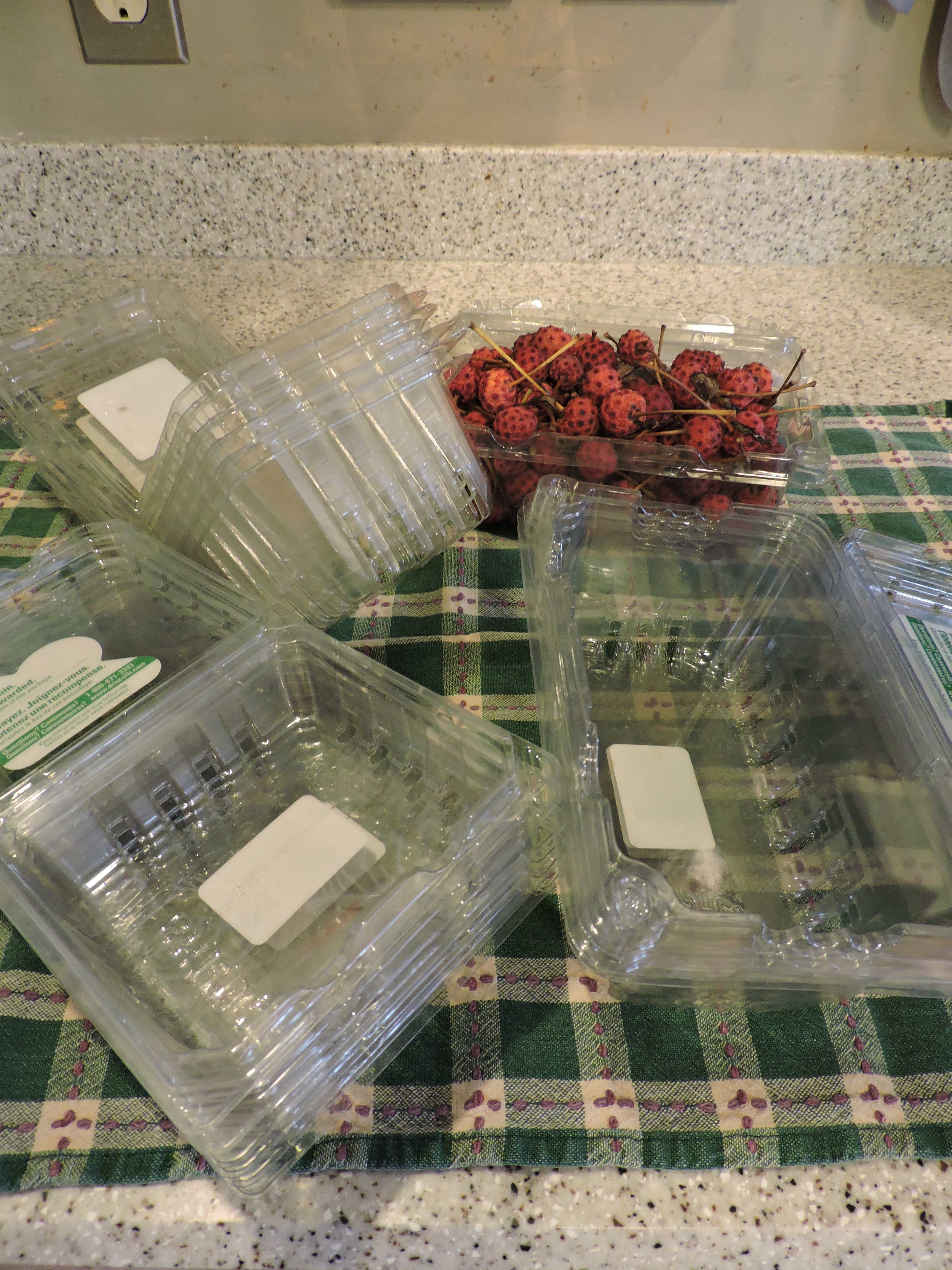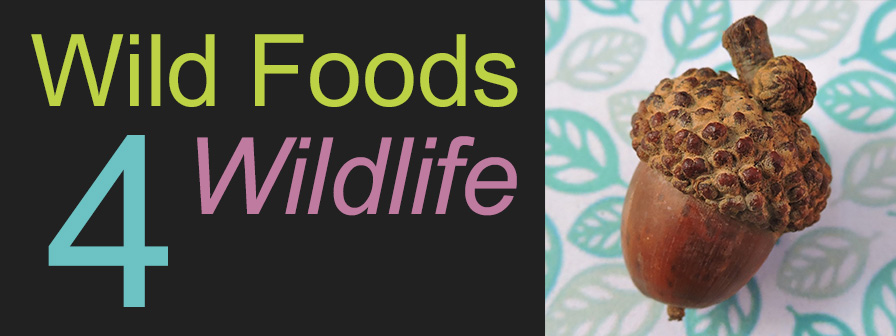
Storing Fruit
Foraging for food is a very high labor, time-consuming activity. Foragers want every scrap of food to be utilized by a critter— this is hard won food you’ve collected! One can’t just pop out to the store and get another batch. Arming yourself with the knowledge and tools to extend the shelf life of harvested foods is worth the time and effort. Educate yourself and the rehab staff about the best conditions to store fruits, greens and seed, especially if you are working with a smaller rehab center that may not have enough patients to use all the food right away. Make sure they get the most “bang” for your labor “buck.”
Fruits In Refrigerator:
Berries should always be refrigerated. Quality storage consists of controlling three things: temperature, humidity and ethylene gas.
1) Best temperature for berries is 33-35 degrees. By keeping fruits on the middle shelf, you are less likely to accidentally freeze them in the crisper if the fridge is running a little cold. Frozen fruit loses quality, so I want a little margin of error…maybe around 37-38 degrees but not over 41 degrees.
2) Humidity directly around the fruit is maintained at the best level by using rigid plastic clamshell containers with holes in them. This allows airflow to decrease mold, let out ethylene gas, but also keeps fragile fruit from being crushed. Lower humidity will dry the fruit out faster from evaporation, but higher humidity will accelerate spoilage.
3) Ethylene gas exposure ripens fruit, so keep berries away from high ethylene-producing fruits. And/ or use an ethylene absorbing product (Read section on Ethylene Gas and Food Quality).
Berry storage advice usually says to wait to wash fruits until you’re ready to use them. Washing fruits before storage usually accelerates the deterioration of the fruit because no matter how much you try to dry them after washing, the increased moisture from washing encourages bacterial growth leading to decay.

Fruits In Freezer:
Freezing wild fruits is a bad idea.
If at all possible, use fresh fruits up quickly. You probably will never have so much quantity of wild fruits that using them up will be a problem. But if for some reason you need to, here is the scoop on best freezing protocols.
Fruits can be kept a lot longer when frozen, but the textural quality gets pretty decimated. When the fruit freezes, ice crystals form inside the fruit. Water expands when it freezes, and it essentially bruises all the fruit tissues with ice crystal knives as it freezes. Then when you thaw the fruit, it is all diced up on the inside and mushy. Drier, less fleshy fruits such as dogwood, spicebush or viburnums fare slightly better with freezing, but not much. Frozen berries do, however, retain their nutritional quality.
To try to minimize damage to any fruit you freeze, freeze as quickly as possible. To achieve this, lay the fruit out in a single layer on a sheet pan with some space around each berry so that it is quickly exposed to cold from all sizes, thus freezing faster. Once totally frozen, you can transfer the frozen berries to an airtight container and continue to store in the freezer until needed. Store them in the coldest section of the freezer where they will not that and refreeze with the door opening and closing.
The best freezer storage is metal canisters or glass jars. Plastic bags are easier to use and to fit in the freezer, but no plastic bag is totally airtight. Thicker bags ARE better. Standard sandwich bags are about 1.5 mil thick. Freezer bags are more expensive and thicker, and will keep fruits from drying out as quickly as a thinner bag would allow. Good quality freezer bags are 3 mils thick or more. A “3 mil” thickness is 3/1000 of an inch or .0762 mm or 76.2 microns thick.
